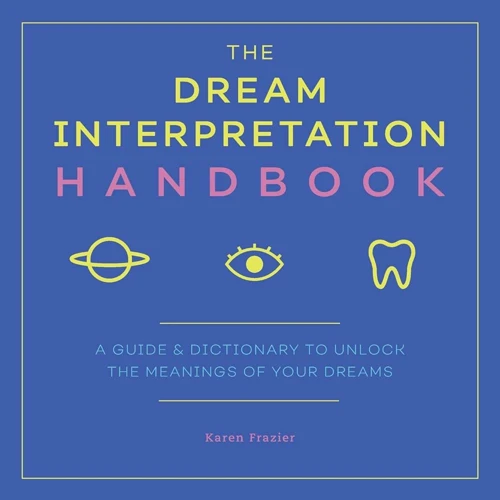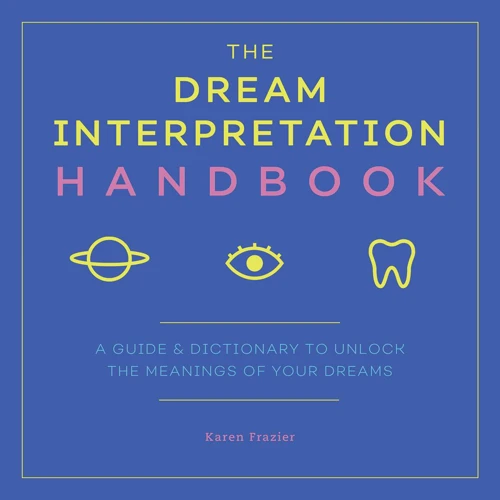Picture a world where your unconscious mind holds the key to unlocking the hidden depths of your innermost thoughts and desires. A world where every night, a vivid tapestry of dreams awaits, ready to guide you on a journey of self-exploration and personal growth. Welcome to a realm where the secrets within your dreams have the power to illuminate the path to a more profound understanding of yourself. In this article, we will delve into the enigmatic world of dreams and unravel the mysteries they hold. From understanding the symbolism within your dreams to harnessing the power of recurring dreams and embracing lucid dreaming, we will embark on a step-by-step exploration of how dreams can aid your personal development. So, grab hold of your proverbial dream compass, and let us navigate the labyrinth of your subconscious mind together.
The Power of Dreams

Dreams have a mystical power that has fascinated humans since ancient times. They serve as a gateway to the unconscious mind, offering glimpses into our deepest fears, desires, and unresolved conflicts. Throughout history, dreams have been attributed with prophetic abilities, providing guidance and insights into the future. But the power of dreams extends beyond fortune-telling. Researchers have discovered that dreams play a vital role in our mental and emotional well-being. They can help us process emotions, consolidate memories, and even resolve psychological trauma. Dreams have also been linked to physical health, with studies suggesting that quality sleep and dream recall contribute to overall well-being. The power of dreams lies in their ability to tap into the unconscious realm, providing us with a unique avenue for self-exploration and personal growth. By understanding and harnessing this power, we can embark on a transformative journey towards self-discovery and fulfillment.
Using Dreams for Self-Exploration

Dreams offer a rich landscape for self-exploration, allowing us to delve into our subconscious and uncover hidden aspects of ourselves. To harness the power of dreams for self-discovery, journaling and reflection can be a valuable practice. By writing down our dreams upon waking and reflecting on their meaning, we can gain insights into our emotions, fears, and desires. Another approach is symbolic interpretation, where we analyze the symbols and imagery within our dreams to uncover their deeper significance. Recognizing patterns and themes that arise in our dreams is yet another way to extract meaning and gain a deeper understanding of ourselves. This process of self-exploration through dreams can lead to personal growth, healing, and a greater sense of self-awareness. Whether it’s processing trauma, improving mental well-being, or even enhancing physical health, dreams have the potential to unlock doors to self-discovery and transformation.
1. Journaling and Reflection
Journaling and reflection are powerful tools for unlocking the secrets hidden within your dreams. By keeping a dream journal, you create a sacred space to record the details of your dreams as soon as you wake up. This practice helps to reinforce your dream recall and allows you to examine the symbolism and themes that emerge. When writing in your dream journal, it’s essential to record not only the narrative of the dream but also your emotional responses and any significant images or symbols that stood out. This process allows you to delve deeper into the meaning of the dream and explore its connections to your waking life. Regularly reviewing your dream journal helps identify patterns and recurring themes, providing valuable insights into your subconscious mind. Through reflection, you can gain a deeper understanding of your thoughts, beliefs, and desires, ultimately aiding in personal growth and self-exploration. So, grab your pen and journal, and begin to unlock the wisdom that lies within the realm of your dreams.
2. Symbolic Interpretation
Symbolic interpretation is a powerful tool for unraveling the hidden meanings within our dreams. Dreams often speak to us in metaphors and symbols, using imagery to convey deeper messages from our subconscious minds. To engage in symbolic interpretation, it’s essential to develop an understanding of common dream symbols and their potential meanings. These symbols can vary widely based on cultural, personal, and archetypal associations. For example, dreaming of water may symbolize emotions, while dreaming of flying can represent a sense of freedom or empowerment. It’s important to note that dream symbols are highly subjective and may differ from person to person. Keeping a dream journal can aid in identifying recurring symbols and personal associations. Exploring the context and emotions surrounding the symbols can provide insights into their significance. Additionally, using resources such as dream dictionaries or seeking guidance from dream therapists can offer further depth to the symbolic interpretation process. By deciphering the symbolism within our dreams, we can gain valuable insights into our subconscious minds and navigate the path to self-exploration and personal growth. Whether you are seeking resolution from nightmares or looking to enhance your mental well-being, understanding the symbolic language of your dreams can be a transformative journey. Explore the depths of your dreams and uncover the profound wisdom that lies within. For more information on dreams and their impact on mental well-being, consider reading our related article “Unlocking the Link Between Dreams and Mental Well-being.”
3. Seeking Patterns and Themes
When seeking patterns and themes within our dreams, we embark on a fascinating journey of self-discovery. By analyzing our dreams over time, we can uncover recurring symbols, emotions, and situations that provide valuable insights into our inner world. One way to identify patterns is by keeping a dream journal and recording our dreams immediately upon waking. This allows us to create a record of our dreams, which can then be reviewed and analyzed for common themes and symbols. Another approach is to categorize dreams based on themes such as relationships, career, or personal growth. By doing so, we can identify patterns that may reflect our subconscious desires, fears, or unresolved issues. For example, repeatedly dreaming about being chased may signify a sense of anxiety or a need to confront and overcome a particular challenge in our waking life. By recognizing these patterns and themes, we can gain a deeper understanding of ourselves and our innermost thoughts and ambitions. This self-awareness can empower us to make conscious choices and take proactive steps towards personal growth and fulfillment. So, let us unravel the intricate tapestry of our dreams, seeking the patterns and themes that guide us towards self-realization and a more meaningful existence.
Understanding Dream Symbols

Understanding dream symbols is like deciphering a secret code that your unconscious mind uses to communicate with you. Dreams are often filled with symbolism that holds personal, universal, or archetypal meaning. Common dream symbols, such as flying or falling, may have universal interpretations, while personal symbols can vary from person to person. Archetypal symbols, like the wise old man or the trickster, tap into the collective unconscious and represent deep-seated human experiences and emotions. By unraveling the meaning behind these symbols, we can gain valuable insights into our subconscious thoughts and emotions. Journaling and reflecting on our dreams can help us identify recurring symbols, patterns, and themes, providing clues about our innermost desires, fears, and unresolved conflicts. As we delve deeper into the realm of dream analysis, we can even uncover hidden traumas that may be affecting our waking lives, opening the door to healing and personal growth. To learn more about the connection between dreams and trauma recovery, you can visit this link. Additionally, understanding the link between dreams and physical health is also crucial to our overall well-being. To explore this connection further, you can visit this link.
1. Common Dream Symbols
When it comes to dream symbolism, some symbols are commonly experienced by many individuals. These common dream symbols often carry universal meanings that can provide insights into our subconscious mind. Here are a few examples:
1. Falling: This is a frequent dream symbol that represents a lack of control or insecurity in your waking life. It could indicate a fear of failure or a sense of losing grip on a situation.
2. Flying: Dreaming of soaring through the sky is often associated with feelings of freedom, liberation, and empowerment. It can reflect a desire for independence or a need to escape from constraints in your life.
3. Teeth falling out: Losing teeth in dreams is a common symbol that typically represents feelings of vulnerability, powerlessness, or anxiety about your appearance or how others perceive you. It may also signify a fear of losing control or the ability to communicate effectively.
4. Being chased: This dream symbolizes avoidance, fear, or a need to confront unresolved issues or emotions. It often reflects feeling pursued by responsibilities, expectations, or unresolved conflicts in your waking life.
5. Water: Water in dreams can have various meanings depending on its form and context. It can symbolize emotions, the unconscious mind, or the depths of your psyche. Clear and calm water often signifies emotional clarity, while turbulent or murky water may indicate emotional turmoil or uncertainty.
It’s important to note that dream symbols can have personal meanings based on individual experiences and associations. While these common symbols provide a general understanding, it’s essential to consider the specific context and emotions surrounding your dream to fully interpret its significance.
2. Personal Dream Symbols
Personal dream symbols are unique to each individual and hold significant meaning in the context of their own lives. These symbols can be people, objects, places, or even specific actions that have personal significance to the dreamer. While there are universal symbols that have collective interpretations, personal dream symbols are deeply intertwined with the dreamer’s experiences, memories, and emotions. For example, a dream about a red rose may hold romantic connotations for one person, while for another, it may symbolize a connection to nature or represent a particular person or event in their life. To uncover the meaning of personal dream symbols, it is essential to reflect on the dreamer’s personal associations and experiences with these symbols. Through introspection and self-analysis, one can decipher the hidden messages and insights that personal dream symbols hold. Paying attention to the emotions and feelings evoked by these symbols can provide valuable clues to their interpretation. Exploring personal dream symbols is a powerful tool for self-exploration as it allows individuals to tap into their unique experiences and gain a deeper understanding of their subconscious mind.
3. Archetypal Symbols
Archetypal symbols are powerful and universal images that carry profound meaning across cultures and time periods. These symbols tap into the collective unconscious, a shared reservoir of psychological and spiritual experiences that transcends individuality. Examples of archetypal symbols include the wise old man, the nurturing mother, the trickster, and the hero. Carl Jung, a renowned psychologist, believed that these symbols are innate to the human psyche and serve as a blueprint for understanding the complexities of life. When analyzing dream symbols, identifying archetypal motifs can provide deep insights into one’s inner world. For instance, encountering the archetype of the shadow in a dream may represent unacknowledged aspects of the dreamer’s personality. Similarly, encountering the archetype of the anima or animus can signify the need for balance and integration of masculine and feminine energies. Exploring archetypal symbols in dreams can unlock hidden wisdom and facilitate personal growth and self-understanding. It allows individuals to connect to a broader collective narrative and tap into the universal truths that transcend cultural and individual boundaries.
Interpreting recurring dreams

Interpreting recurring dreams can offer valuable insights into our subconscious mind and provide us with clues about unresolved issues or patterns in our lives. These dreams often occur when our subconscious is trying to bring our attention to something important. To interpret recurring dreams effectively, there are a few key steps to follow:
1. Keep a Dream Journal: Start by keeping a detailed record of your recurring dreams. Documenting the specific details, emotions, and symbols present in each dream can help identify patterns or recurring themes.
2. Analyze Symbolism: Pay close attention to the symbols that appear in your recurring dreams. Symbols can have personal meanings, so it’s important to explore the significance they hold for you. Reflect on what these symbols represent in your life and how they may relate to your waking experiences.
3. Identify Emotions: Take note of the emotions experienced during the recurring dream. Emotions can provide valuable clues to the underlying message or theme of the dream. Explore how these emotions may relate to your current life circumstances or past experiences.
4. Look for Patterns: Analyze any recurring patterns or themes that appear throughout your dreams. These patterns can offer insights into unresolved conflicts, recurring challenges, or aspects of your life that may need attention or resolution.
5. Consult with a Dream Interpretation Resource: If you find it challenging to interpret your recurring dreams on your own, consider seeking guidance from dream interpretation resources such as books, online articles, or even consulting with a professional dream analyst.
By engaging in a systematic approach to interpreting recurring dreams, you can unlock the hidden messages they hold and gain a deeper understanding of yourself and your life. Remember, recurring dreams are like messages from your subconscious, urging you to pay attention and embark on a journey of self-discovery and growth.
Embracing Lucid Dreaming

Explore the realm of lucid dreaming, where the line between dream and reality becomes blurred, and you gain conscious control over your nighttime adventures. Lucid dreaming is a state of heightened awareness within the dream world, allowing you to actively participate and shape the events unfolding around you. By embracing lucid dreaming, you can tap into the remarkable potential of your unconscious mind and unleash a world of infinite possibilities. Engaging in reality checks and reality testing throughout the day can help train your mind to recognize when you are dreaming, opening the door to lucidity. Setting dream intentions before sleep primes your mind for specific experiences or goals within the dream world. Once lucid, dream control and exploration become possible as you navigate through surreal landscapes, encounter fascinating characters, and even indulge in extraordinary abilities. Embracing the world of lucid dreaming is an adventure like no other, inviting you to step into a parallel universe filled with wonder, excitement, and the opportunity for profound self-discovery.
1. Reality Checks and Reality Testing
Reality checks and reality testing are essential techniques for achieving lucid dreaming, a state where you become aware that you are dreaming while still within the dream itself. This powerful practice allows you to actively participate and shape your dreams, leading to profound self-exploration and personal growth.
One effective way to perform reality checks is by questioning the nature of your surroundings throughout the day. Ask yourself, “Am I dreaming?” and take a moment to examine your environment. Look for any out-of-place details, inconsistencies, or illogical elements. By establishing this habit of inquiry, you are preparing your mind to question the reality within your dreams.
Another technique is to perform physical reality checks. These involve testing the laws of physics within your dream. For example, try pushing your hand through a solid object or jumping in the air to see if you can float or fly. These actions help create a cognitive shift, prompting you to question whether you are in a dream or waking reality.
Creating a dream journal to record these reality checks and any insights gained during the day can be extremely beneficial. This allows you to identify patterns and triggers that may lead to lucid dreaming. You may discover that certain events or experiences are more likely to prompt awareness within a dream.
By incorporating reality checks and reality testing into your daily routine, you are training your mind to question the nature of reality, leading to increased lucidity within your dreams. As you master these techniques, you will open the door to a world of limitless possibilities, where you can actively explore and shape the landscapes of your dreams.
2. Setting Dream Intentions
Setting dream intentions is a powerful technique that allows us to actively engage with our dreams and direct their course. By setting a specific intention before going to bed, we can focus our mind and increase the chances of having a dream related to that intention.
One effective way to set a dream intention is through visualization. Before sleep, take a few moments to visualize the desired dream scenario or the specific issue you would like to explore. Visualize it vividly and imagine yourself actively participating in the dream.
Another technique is to repeat a mantra or affirmation related to your dream intention. Choose a short and concise statement that aligns with your desired dream experience. For example, if you want to gain insight into a personal challenge, you could repeat affirmations such as “In my dream tonight, I will receive clarity and guidance on [specific challenge].”
Writing down your dream intention in a dream journal can also be helpful. This reinforces the intention in your mind and serves as a reminder when you wake up. Additionally, keeping a dream journal allows you to track the progress of your dream intentions over time.
It’s important to note that setting dream intentions doesn’t guarantee immediate results. It may take time and practice to develop a strong connection between your conscious intentions and your dream experiences. However, with patience and persistence, this technique can greatly enhance your ability to explore specific topics or gain insights through your dreams.
3. Dream Control and Exploration
Dream Control and Exploration is a fascinating aspect of lucid dreaming that allows individuals to actively participate and manipulate the dream environment. Once you have achieved lucidity in your dream, there are various techniques you can use to exert control and explore the dream world.
Dream Stabilization: One of the first steps in dream control is to stabilize the dream. This involves engaging your senses in the dream, such as feeling the texture of objects, noticing the vividness of colors, and listening to the sounds around you. By focusing on these sensory details, you can ground yourself in the dream and prevent it from fading or becoming fragmented.
Flight and Movement: One of the most exhilarating aspects of dream control is the ability to fly and explore your dream environment from a bird’s-eye view. With practice, you can learn to effortlessly take flight and soar through the sky, experiencing a sense of freedom and liberation. You can also experiment with different modes of transportation or simply explore the dream landscape on foot.
Object Manipulation: In lucid dreams, you have the power to manipulate objects according to your will. You can summon objects into existence, change their appearance or properties, and even teleport them to different locations. This allows for creative and imaginative exploration within the dream world.
Meeting Dream Characters: Another aspect of dream control and exploration involves interacting with dream characters. These characters can represent different aspects of your subconscious mind and engaging with them can provide valuable insights. You can engage in conversations, ask them questions, or even seek guidance and advice.
Creating Dream Scenarios: Lucid dreaming allows you to create and shape the dream scenarios in accordance with your desires. You can imagine and manifest specific situations, whether it’s exploring an exotic location, experiencing a favorite activity, or reliving a cherished memory. This aspect of dream control enables you to indulge in pleasurable and meaningful experiences within the dream realm.
Exploring the Dream Within a Dream: In some instances, lucid dreamers can experience a phenomenon known as a “dream within a dream.” This allows for an additional layer of exploration and introspection, where you can delve deeper into the recesses of your subconscious mind and uncover hidden meanings or symbols.
Dream control and exploration truly open up a world of possibilities within the realm of lucid dreaming. With practice and intention, you can unlock the potential to shape and direct these nocturnal adventures, providing a rich platform for self-discovery, creativity, and personal growth. Note the link for more information on the impact of lucid dreaming on mental well-being.
Using Dreams to Guide Personal Growth

Dreams have the incredible capability to guide and facilitate personal growth. By tapping into the wisdom of our unconscious mind, dreams can offer profound insights and guidance for our journey of self-discovery. One way to use dreams for personal growth is by identifying inner conflicts, symbols and themes that arise during sleep. Through introspection and reflection, we can gain a deeper understanding of these conflicts and work towards resolving them. Dreams also provide a powerful means of exploring our unconscious desires. They can reveal hidden passions, longings, and aspirations that we may not be consciously aware of. By analyzing and embracing these desires, we can take steps towards aligning our lives with our truest selves. Additionally, dreams offer an opportunity to confront fears and traumas from a safe distance, enabling us to process and heal emotional wounds. Finally, dreams can unlock our creative potential by presenting us with innovative ideas, solutions, and artistic inspiration. By harnessing the insights gained from our dreams, we can unleash our creativity and intuition and embark on a transformative journey of personal growth and self-realization.
1. Identifying Inner Conflicts
Identifying and resolving inner conflicts is a crucial step in personal growth, and dreams can be a valuable tool in this process. Dreams often reflect the underlying conflicts and tensions within our psyche that we may not be consciously aware of. When analyzing your dreams, pay attention to the emotions, themes, and interactions portrayed. Are you experiencing conflict, struggle, or indecision in your dreams? These may indicate unresolved conflicts within yourself or in your relationships. Look for patterns or recurring symbols that point towards these conflicts. For example, dreaming of being trapped in a maze or fighting with a loved one can signify internal struggles or unresolved issues in your personal life. By consciously exploring and reflecting on these dream scenarios, you can gain insights into the root causes of your conflicts and start working on finding resolution. Remember that dreams are like mirrors reflecting our innermost thoughts and feelings, and by unraveling their symbolism, you can gain a deeper understanding of yourself and take steps towards inner harmony and growth.
2. Exploring Unconscious Desires
Exploring our unconscious desires is a pivotal aspect of using dreams for personal growth. Dreams allow us to access parts of ourselves that may be hidden or suppressed in our waking lives. They provide a safe space for our deepest desires and aspirations to manifest without judgment or influence from external factors. When we delve into our dreams with the intention of exploring our unconscious desires, we can uncover hidden passions, goals, and motivations that we may not have been aware of consciously. These desires often represent our truest selves, free from societal expectations or limitations. By paying attention to recurring themes or symbols in our dreams, we can gain valuable insights into our authentic desires. Are there recurring dreams of flying, suggesting a desire for freedom and liberation? Or perhaps recurring dreams of being on stage, indicating a longing for self-expression and recognition? By identifying and acknowledging these unconscious desires, we can take steps towards manifesting them in our waking lives and working towards a more fulfilling and purpose-driven existence. It is important to approach this exploration with an open mind and a willingness to dive deep into the layers of our subconscious. Through this introspective journey, we can discover aspects of ourselves that have the potential to ignite passion, drive, and fulfillment. Embracing and acting upon these unconscious desires can lead us to a life of authenticity and personal satisfaction.
3. Confronting Fears and Traumas
Confronting fears and traumas is a courageous and necessary step in personal growth, and dreams can serve as a powerful tool in this process. During sleep, our subconscious mind has the opportunity to process and explore unresolved emotions and experiences. Dreams can bring repressed fears and traumas to the surface, allowing us to confront them in a safe and controlled environment. Through vivid and symbolic imagery, dreams provide a platform for re-experiencing these emotional wounds and can often offer insights and perspectives that help us heal. By recognizing and engaging with the fears and traumas presented in our dreams, we can gain a deeper understanding of their origins and their impact on our daily lives. This self-awareness is an essential first step towards healing and overcoming these emotional obstacles. Through dreamwork and exploration, we can gradually release the grip of these fears and traumas, enabling personal growth and a newfound sense of inner strength and resilience.
4. Unleashing Creativity and Intuition
Unleashing creativity and intuition is an incredible benefit that dreams offer. When we dream, we tap into the vast well of our subconscious mind, where our imagination and intuition thrive. Dreams have the power to inspire and ignite our creative potential, providing us with a limitless playground for artistic expression. In dreams, we may encounter vivid imagery, musical compositions, or fantastical landscapes that nourish our creative spirit. By paying attention to these elements and capturing them in our waking life, we can infuse our art, writing, or any creative pursuit with a touch of the surreal and the imaginative.
Additionally, dreams can serve as a wellspring of intuitive guidance. Our dreams often contain symbols, messages, or even direct guidance from our higher selves or the collective unconscious. By tuning in to our dreams and analyzing their symbolism, we can tap into our intuitive wisdom and access insights that may have eluded us in our waking state. These intuitive flashes can unlock new perspectives, inspire innovative problem-solving, and offer deep personal insights.
To fully unleash creativity and intuition through dreams, it’s essential to cultivate a receptive mindset. This involves setting the intention to receive creative inspiration and intuitive guidance in our dreams. Before sleep, affirmations or visualizations can be used to program the mind to explore these aspects during dreams. Engaging in creative practices such as journaling, painting, or engaging in hobbies that nurture our artistic side can also help amplify the creative energy within our dreams.
Dreams provide a rich tapestry of creativity and intuition waiting to be unlocked. By embracing and exploring the symbols and messages within our dreams, we can tap into our artistic potential and receive intuitive guidance that can enhance our personal and professional lives. So, let your dreams be a playground for your imagination and a wellspring of intuitive wisdom that nurtures your growth and brings forth your unique creative expression.
Keeping a Dream Diary
Keeping a dream diary is an essential tool for unlocking the secrets hidden within our dreams. By establishing a routine of recording our dreams upon waking, we can capture the fleeting details and emotions that would otherwise fade from memory. To maintain a dream diary, it is crucial to create a dedicated space for jotting down these nocturnal adventures. Whether using a physical journal or a digital platform, the key is to have a designated place to document our dreams. When recording our dreams, we should focus on capturing as many details as possible, including the setting, people, and events. It’s also important to reflect on any patterns or recurring themes that arise, as they may hold deeper significance. By regularly reviewing our dream diary, we can gain valuable insights into our subconscious mind and harness the transformative potential of our dreams.
1. Establishing a Routine
Establishing a routine is crucial when keeping a dream diary. Having a consistent schedule for recording your dreams helps create a strong foundation for dream recall and analysis. Start by setting aside a regular time each morning to jot down your dreams. Ideally, this should be immediately upon waking up, as dreams are easily forgotten if not captured quickly. Place a notebook and pen or a dream journal by your bedside, so they are easily accessible when you wake up. Having these tools within reach eliminates the risk of forgetting or losing details as you search for writing materials. Additionally, create a calming and peaceful atmosphere in your sleeping area to enhance your ability to recall dreams. Keep distractions to a minimum and create a relaxing bedtime routine to promote deep and restful sleep. By establishing a consistent routine, you create a fertile ground for your dreams to thrive and allow for a more comprehensive exploration of their meaning and significance.
2. Capturing and Recording Details
Capturing and recording details is a crucial step in keeping a dream diary. When it comes to remembering dreams, details can easily slip away if not captured promptly. Upon waking, it is essential to jot down as much information as possible about the dream. One effective approach is to keep a pen and paper, or a smartphone, within reach of your bedside. As you wake up and become aware of your dreams, jot down key elements such as people, places, objects, emotions, and any significant events. Include sensory details like colors, sounds, and textures, as these can enrich the overall understanding of the dream. Additionally, consider recording the sequence of events, even if they seem disjointed or surreal. Drawing sketches or diagrams can also be helpful in visually representing the dream. The key is to capture these details while they are still fresh in your mind. This practice not only strengthens dream recall but also provides a concrete record to refer back to when analyzing patterns and themes in your dreams.
3. Reflecting on Patterns and Themes
When keeping a dream diary, reflecting on patterns and themes can provide valuable insights into the recurring motifs and symbols that appear in your dreams. By identifying these patterns, you can gain a deeper understanding of your subconscious mind and uncover hidden meanings behind your dreams. One way to reflect on patterns is to create a dream journal where you can regularly write down and categorize the recurring elements in your dreams. You can use an html table or html list to organize and track these patterns. For example, you may notice that water is a common theme in your dreams, symbolizing emotions and the unconscious. By recognizing this pattern, you can explore the significance of water in your waking life and uncover any underlying emotional patterns. Additionally, look for recurring situations, characters, or emotions in your dreams. Are there certain scenarios that repeat themselves? Are there specific emotions that arise frequently? Reflecting on these patterns can help you gain a deeper understanding of your inner thoughts, desires, and fears.
Conclusion
In conclusion, dreams hold a remarkable power to aid in our self-exploration and personal growth. They offer us a glimpse into the depths of our subconscious mind, revealing hidden desires, unresolved conflicts, and fears that may be holding us back. By journaling, interpreting symbols, and seeking patterns in our dreams, we can uncover valuable insights and gain a deeper understanding of ourselves. Recurring dreams and lucid dreaming give us opportunities to address recurring themes and take control of our dream experiences. Through dreams, we can identify inner conflicts, explore our unconscious desires, confront fears and traumas, and tap into our creativity and intuition. Keeping a dream diary allows us to capture and reflect on the details, patterns, and themes of our dreams, further enhancing our self-discovery journey. As we embrace the power of dreams, we open ourselves to a world of self-exploration and personal growth, unlocking the secrets within and harnessing the wisdom of our own subconscious minds.
Frequently Asked Questions
1. Can everyone remember their dreams?
While not everyone remembers their dreams, it is estimated that most people have multiple dreams each night. By incorporating certain techniques, such as keeping a dream diary or setting intentions before sleep, you can improve your dream recall.
2. Do dreams have any real meaning?
Yes, dreams have significant meaning. They serve as a reflection of our subconscious mind and can provide insight into our emotions, fears, and desires. By interpreting dream symbols and themes, we can gain a deeper understanding of ourselves and our lives.
3. Are nightmares a sign of underlying trauma?
Nightmares can be a symptom of underlying trauma or emotional distress. They may serve as a way for the subconscious mind to process and release unresolved emotions. Seeking professional help can assist in addressing the trauma and promoting healing.
4. How can I interpret the symbols in my dreams?
Interpreting dream symbols requires a personal and intuitive approach. While some symbols may have universal meanings, such as water representing emotions, it is crucial to consider the context and personal associations you have with the symbols in your dreams.
5. What is lucid dreaming?
Lucid dreaming is the state of being aware that you are dreaming while still in the dream. It offers the opportunity to actively participate and control the dream narrative, allowing for deliberate exploration and self-discovery within the dream world.
6. Can lucid dreaming improve problem-solving abilities?
Yes, lucid dreaming has the potential to enhance problem-solving abilities. By consciously navigating and manipulating the dream environment, individuals can practice creative problem-solving techniques and gain new perspectives on real-life issues.
7. How can dreams guide personal growth?
Dreams can guide personal growth by revealing subconscious patterns, conflicts, and desires. Through dream analysis and reflection, individuals can identify areas for self-improvement, resolve inner conflicts, confront fears, and tap into their creative potential.
8. What role does keeping a dream diary play?
Keeping a dream diary is an invaluable tool for exploring the depths of your dreams. It helps in improving dream recall, capturing specific details, identifying patterns and themes, and fostering self-reflection and personal growth.
9. Can recurring dreams hold significant meaning?
Recurring dreams often hold significant meaning, as they indicate unresolved issues or patterns in our lives. By paying attention to the recurring themes and symbols in these dreams, we can uncover deeper insights and work towards resolution and personal growth.
10. Can dreams provide guidance for physical health?
While dreams are primarily connected to mental and emotional well-being, research has found associations between dream content and physical health. Some studies suggest that dreams may provide information about one’s physical state and can potentially serve as indicators of underlying health concerns.








